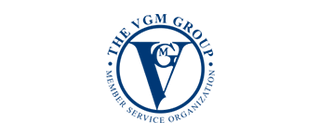Overnight Oximetry to Test for Low Oxygen Levels
This is a great article that was written by By Brandon Peters, MD.
https://www.verywellhealth.com/overnight-oximetry-is-a-commonly-used-screening-test-3015119
If you are suspected of having a sleep disorder like obstructive sleep apnea, your medical provider may recommend that you undergo overnight pulse oximetry, a commonly used screening test that evaluates blood oxygen levels. This testing is also used to qualify for home oxygen use. What happens with this test? How is the information used? Learn about oximetry and how it might be helpful to evaluate your breathing in sleep.
What Is Pulse Oximetry?
Overnight oximetry is a simple test that can easily be done at home. It provides basic information that may be useful in initially evaluating whether you have one of the more common sleep disorders, sleep apnea.
The test typically involves applying a plastic clip over the end of your finger. Imagine a large clothespin or plastic sleeve that encloses your fingertip. This clip may be held in place with a piece of tape, but it is not painful to have on and it can be removed easily. It is usually connected via a cable to a small box that records the data overnight. If you use continuous positive airway pressure (CPAP), it can be connected to this device to record the data. Newer devices may adhere directly to the skin and provide similar measurements.
Within the overnight oximeter sensor is a red light. This red light shines through your finger or the surface of your skin. Often on the other side, or sometimes parallel to the emitting light, is a sensor that can measure your pulse (or heart rate) and the oxygen content of your blood. The latter is determined by the color of your blood, which will vary with the amount of oxygen that it contains. Highly oxygenated blood is more red, while blood that is poor in oxygen is more blue. This changes the frequency of the light wavelength that is reflected back to the sensor.
Oximetry to Evaluate Oxygen Levels and Identify Sleep Apnea
These data are recorded continuously over the course of the night and will result in a graph. Your medical provider will be able to review it and determine if there are abnormal drops in your oxygen levels called desaturations. This may occur recurrently in sleep apnea.
It is also possible for the oxygen levels to be sustained at lower levels, especially in the setting of underlying lung disease like chronic obstructive pulmonary disease (COPD) or emphysema.
With the oxygen desaturations, there may be associated increases in your heart rate. These events may suggest the presence of sleep apnea because it involves periodic pauses in your breathing and drops in the oxygen level of your blood that lead to a spike of cortisol (stress hormone) that impacts the heart.
Normal Levels for Pulse Oximetry Measurements
In general, it is considered abnormal if the oxygen levels fall below 88 percent in adults or below 90 percent in children. Importantly, the duration of this decrease matters. If the levels are below 88 percent for longer than 5 minutes during a night, a condition called hypoxemia may be diagnosed. These levels can be very low, and generally desaturations to less than 80 percent are considered severe.
These drops in the blood oxygen levels may require treatment. If the underlying cause is due to sleep apnea, then CPAP or bilevel therapy may be effective. However, in the absence of sleep apnea, the use of supplemental oxygen as delivered via tubing to a nasal cannula from an oxygen concentrator or oxygen tank may be needed to resolve the abnormality.
The Pros and Cons of Overnight Oximetry in Sleep
This screening test is easy and inexpensive, but it is not perfect. The devices are becoming more widely available to consumers. They can be purchased online or even at pharmacies. What value might these measurements offer?
Oximeters only provide a limited amount of information. In addition, there are subtleties involved in sleep disorders that it may not be able to detect. For example, sleep position (especially sleeping on one's back) and sleep stages (especially REM sleep) may impact the degree of oxygen changes. Simple devices cannot identify these contributions.
Nevertheless, overnight oximetry may be useful in identifying some people who warrant further testing, such as polysomnography or more extensive home sleep apnea testing. It can also be helpful to ensure that sleep apnea treatment is effective and that oxygen desaturations that were noted on prior diagnostic testing have resolved.




